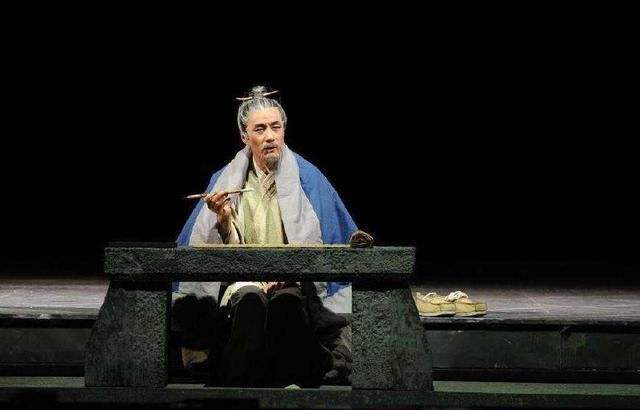Sima Qian
4 min readSima Qian’s Early Life and Education
Sima Qian(145-c.90B.C.)was a Prefect of the Grand Scribes of the Han Dynasty.He is regarded as the father of Chinese historiography because of his highly praised work,Shiji,an overview of the history of China covering more than two thousand years from the Yellow Emperor to Emperor Wu of Han dynasty.His work laid the foundation for later Chinese historiography.
Sima Qian was born and grew up in Longmen,near present-day Hancheng.He was raised in a family of historiographers.Under the influence of his father,at the age of ten,Sima Qian was already well versed in old writings.At the age of twenty,with the support of his father,Sima Qian started a journey throughout the country,collecting useful first-hand historical records for his main work,Shiji.The purpose of his journey was to verify the ancient rumors and legends and to visitancient monuments,including the renowned graves of the ancient sage kings Yu and Shun.After his travels,he was chosen to be the Palace Attendant in the government,whose duties were to inspect different parts of the country with Emperor Wu.In 110BC,at the age of thirty five,sina Qian was sent westward on a military expedition agaist some”barbarian”tribes.From 109 BC,Sima Qian started to compile Shiji and inherited his father’s inspiration.In 99 BC,Sima Qian got involved in the Li Ling Affair.Li Guangli and Li Ling,two military officers,were ordered to lead a campaign against the Xiongnu in the north.

Having been defeated and taken as captives,Emperor Wu attributed the defeat to Li Ling.
Emperor Wu thought Sima Qian’s defence of Li Ling was an attack on Emperor Wu’s brother-in-law who was fighting against Xiongnu without much success.Subsequently,he was sentenced to death.At that time,execution could be replaced either by money or mutilation(i.e.castration).Since Sima Qian did not have enough money to atone his fault,he chose the latter and was then thrown into prison.
In 96BC,Sima Qian was released from prison.The three-year ordeal in prison did not frighten Sima Qian away.On the contrary,it became a driving force compelling him to succeed his family’s legacy of recounting history.So he continued to write Shiji,which was finally finished in 91 BC.
Historian
Although the style and form of Chinese historical writings varied through the ages,Sima Qian’s Shiji has since dictated the proceeding quality and style.Not only is this due to the fact that the Chinese historical form was codified in the second dynastic history by Ban Gu’s Han Shu,but historians regard Sima Qian’s work as their model,which stands as the“official format”of the history of China.
In writing Shiji,Sima Qian initiated a new writing style by presenting history in a series of biographies.His work extends over 130 chapters-not in historical sequence,but was divided into particular subjects,including annals,chronicles,treatises-on music,ceremonies,calendars,religion,economics,and extended biographies.Before Sima Qian,histories were written as dynastic history;his idea of a general history affected later historiographers like Zhengqiao in writing Tongshi and Sima Guang in writing Zizhi Tongjian.Sima Qian even affected the writing style of histories in other places,as seen in The History of Korea,which was written as a general history.
Literary Figure
Sima Qian’s Shiji is respected as a model of biographical literature with high literary value.
Skillful depiction:its artistry was mainly reflected in the skillful portrayal of many distinctive characters which were based on true historical information.Sima Qian was also good at illustrating the response of the characterby placing him in a sharp confrontation and letting his words and deeds speak for him.The use of conversations in his writing also makes the descriptions more vibrant and realistic.
Innovative approach:Sima Qian also initiated a new approach in writing history.The language used in Shiji was informal,humorous and full of variations.
This was an innovative way of writing at that time and thus it has always been esteemed as the highest achievement of classical Chinese writing.
Concise language:Sima Qian formed his own simple,concise,fluent,and easy to-read style.He made his own comments while recounting the historical events.In writing the biographies in Shiji,he avoided making general descriptions.Instead he tried to catch the essence of the events and portrayed the characters concretelyand thus the characters in Shiji gave the readers vivid images with strong artistic appeal.
Influence on literature:Sima Qian’s writings were influential to Chinese writing,which become a role model for various types of prose within the neo-classical movement of the Tang-Song period.The great use of characterisation and plotting also influenced fictional writing,including the classical short stories of the middle and late medieval period(Tang-Ming),as well as the vernacular novel of the late imperial period.Shiji still stands as a“textbook” for the studies of classical Chinese worldwide.
other literary works:apart from Shiji,Sima Qian had written eight rhapsodies,which are compiled in Ban Gu’s Hanshu.Sima Qian expressed his suffering during the Li Ling Affair and his perseverance in writing Shiji in these rhapsodies.








